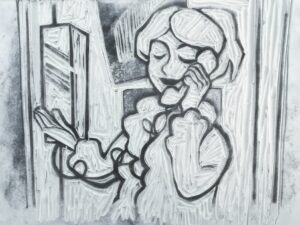The theme of this week’s lecture was about how we as designers interact with the environment, how our designs have a role in nature and how nature should be a consideration in our work. Key things to consider as a designer include minimizing environmental impact, making sure to use sustainable materials and the lifecycle/reusability/recyclability of a product. As a digital animator I was perplexed by how I could incorporate these principles into my practice. I understand and incorporate ecological design into other aspects of my life and hobbies but have never stopped to consider how my own craft of choice might fare. It’s difficult to rethink such a digitally based design field with the environment in mind. I think that most people would find that the solution would be to cut out digital steps and to replace them with pen and paper when applicable, to cut down on electricity and water usage. A lot of large studios use a hybrid approach to designing; pen and paper is often used during the initial design process for character designs and storyboards, which can then be scanned in and altered digitally. I do this during my work process as well – my initial thoughts and designs are brought to life in my sketchbooks then transferred to digital to develop further.

However, whilst digital methods use a lot of electricity, therefore produce large amounts of CO2, fully traditional methods also produce a lot of physical waste that often can’t be disposed of sustainably, and materials used require a lot of electricity and CO2 production to be produced in the first place. Digital, 3D, stopmotion, papercraft, whatever your choice of animation, all of them will produce unwanted waste in the form of physical, unrecyclable pollutants, gasses, water pollution, or most likely all of the above. There isn’t a specific type of animation that is better or worse for the environment, the technology used to make any animation is the largest polluter. I feel that the animation industries’ biggest offence is its usage of unsustainable energy resources. I believe the industry’s issue goes way beyond animation itself and its most prolific environmental damage is rather caused by capitalism, consumerism and materialism. There is not much I can do about this as a student, but I will be looking deeper into this in the coming weeks. Next week is a continuation of our relationship with the environment theme. I would like to find out what I can do to minimize damage in my own designs, and how these practices could be adopted by larger studios.

Bibliography
- Green Digest (2024). Evaluating a company’s impact (the case of Disney). [online] Green Digest. Available at: https://www.greendigest.co/p/waltdisney-environmental-and-social-impact.
-
APS Blog (2024). Sustainability in Animation Production – arenaparkstreet.com. [online] arenaparkstreet.com -. Available at: https://arenaparkstreet.com/sustainability-in-animation-production/.

